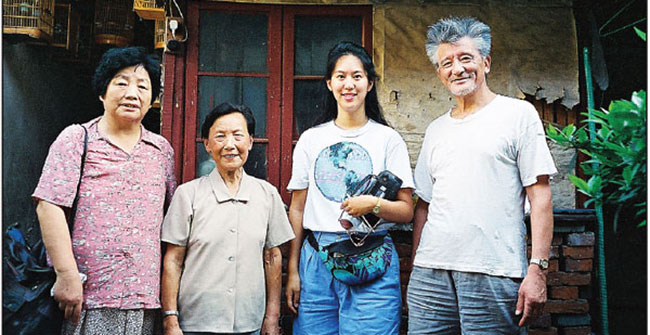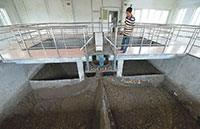Rail cautiously gains speed
(China Daily) Updated: 2012-07-24 07:11It has been one year since the fatal Wenzhou train crash dented China's enthusiasm for high-speed trains. Construction and operation of high-speed railway networks has resumed, but at a slower pace and in a more cautious manner.
Instead of mentioning the accident on Monday, the country's railway ministry announced China's completion of a railway to Lop Nur, a dried northwest lake where China exploded its first atomic bomb in 1964.
In Hangzhou, several hundreds kilometers from the accident scene, the waiting halls in the Hangzhou Railway Station are, as usual, filled with business travelers, home-bound students and tourists.
Passengers who once avoided taking high-speed trains after the Wenzhou accident have returned one year later.
"There is no better choice, and the chance of there being an accident is low, anyway," said Huang Yunyi, a clerk at a foreign-trade company in Hangzhou, the capital of Zhejiang province.
On July 23 last year, a high-speed train slammed into a stalled train near the eastern city of Wenzhou, leaving 40 people dead and 172 injured. The incident was blamed on faulty signaling equipment, and 54 officials, including former railway minister Liu Zhijun, have been punished.
About 52.6 million passenger trips have been made on the Beijing-Shanghai high-speed line since it started running on June 30 last year, according to the railway operator.
People were also lining up at the ticket counter to take the Beijing-Tianjin high-speed train on Monday afternoon. A Xinhua reporter who took the train found that every seat in the car was occupied.
But it will still take time to heal the wounds of the tragedy. For 2-year-old Xiang Weiyi, the last survivor found in the wreckage, the crash not only took away her parents, but also left her with serious injuries to her left leg.
The girl is now able to walk, run and jump, which is a "miracle," according to her uncle, Xiang Yuyu.
Feng Gang, a sociology professor with Zhejiang University, said, "Every Chinese expects the fatal incident could lead to a more safe railway system."
So far, the combined length of China's high-speed railway has reached 13,000 km, the most of any country in the world.
In response to the fatal accident, China slowed work on new lines, conducted nationwide safety checks and ordered train to cut speeds. Some of the lines have cut train speeds to less than 200 km per hour.
In late May, the Ministry of Railways said that only 2,322 km of new high-speed lines will open this year, down from a plan of seven high-speed lines totaling 3,500 km in March, and that the opening of the remaining lines could be postponed.
China set a target to raise 500 billion yuan ($79.4 billion) for both high-speed and conventional line development this year. But in the first four months, the ministry invested only 89.6 billion yuan, down 48.3 percent year-on-year.
Debt has remained high in the railway sector. The ministry - the main investor in China's railway projects - reported a loss of 7 billion yuan in the first quarter, with its debt-to-asset ratio standing at around 60 percent.
To bring more high-speed lines into service, the cash-strapped railway ministry issued guidelines in May, considered to be by far the most open and detailed in the sector, inviting private investors to participate in rail projects.
In this document, the railway ministry said it will treat private investors impartially when they invest in railway projects. Eligible investors will be allowed to participate in railway design, construction, consultation and equipment purchase.
Investors will be encouraged to invest in all kinds of railways, including passenger lines and profitable coal-carrying heavy-haul railways.
The guidelines also said railway-related companies are encouraged to go public, while more insurance companies are welcomed to invest in rail.
Wang Mengshu, an expert on railway technology and a member of the Chinese Academy of Engineering, has applauded the move to break the funding monopoly, and expects to see more.
- CPC unveils major economic tasks to boost growth
- Advanced destroyers boost combat capability of PLA
- How apocryphal speech of Nobel laureate became a viral hit
- Delay 2nd baby, experts say
- China mulls court services in English
- CPC releases document to intensify political education
- Courts to improve services for ethnic litigants
- Air pollution jumped to alarming levels last month
- Officials admit to faking economic figures
- New anti-terror guidelines released







